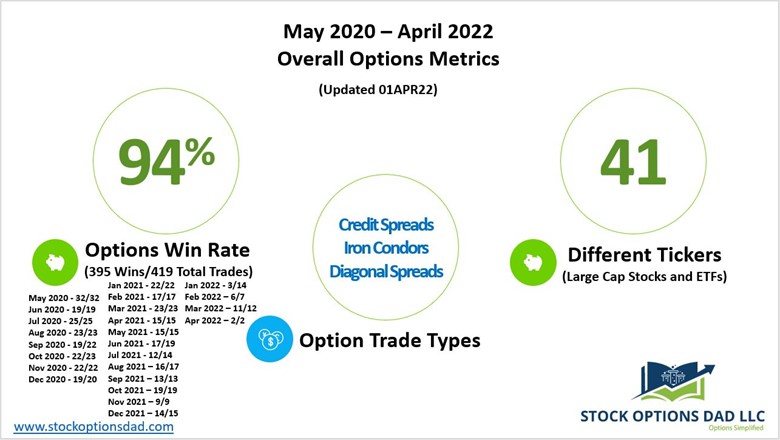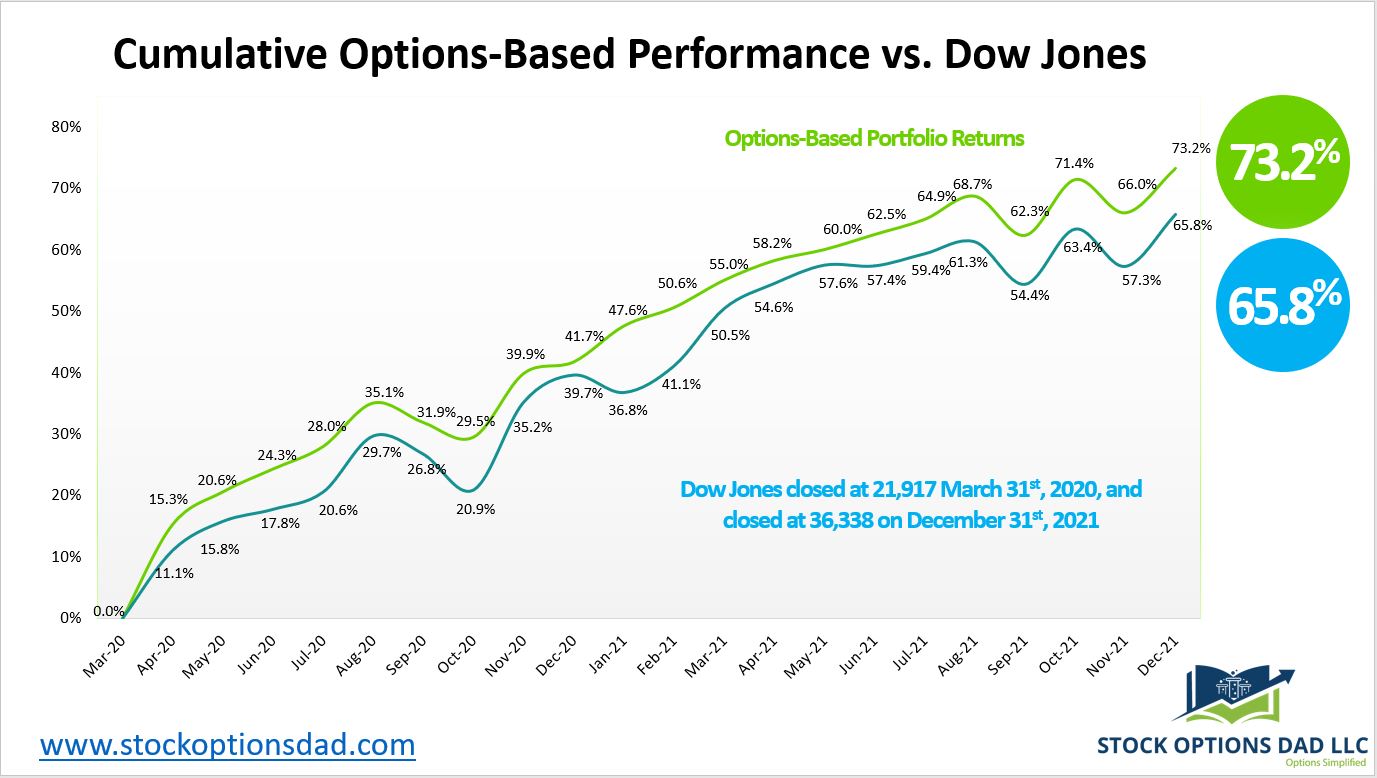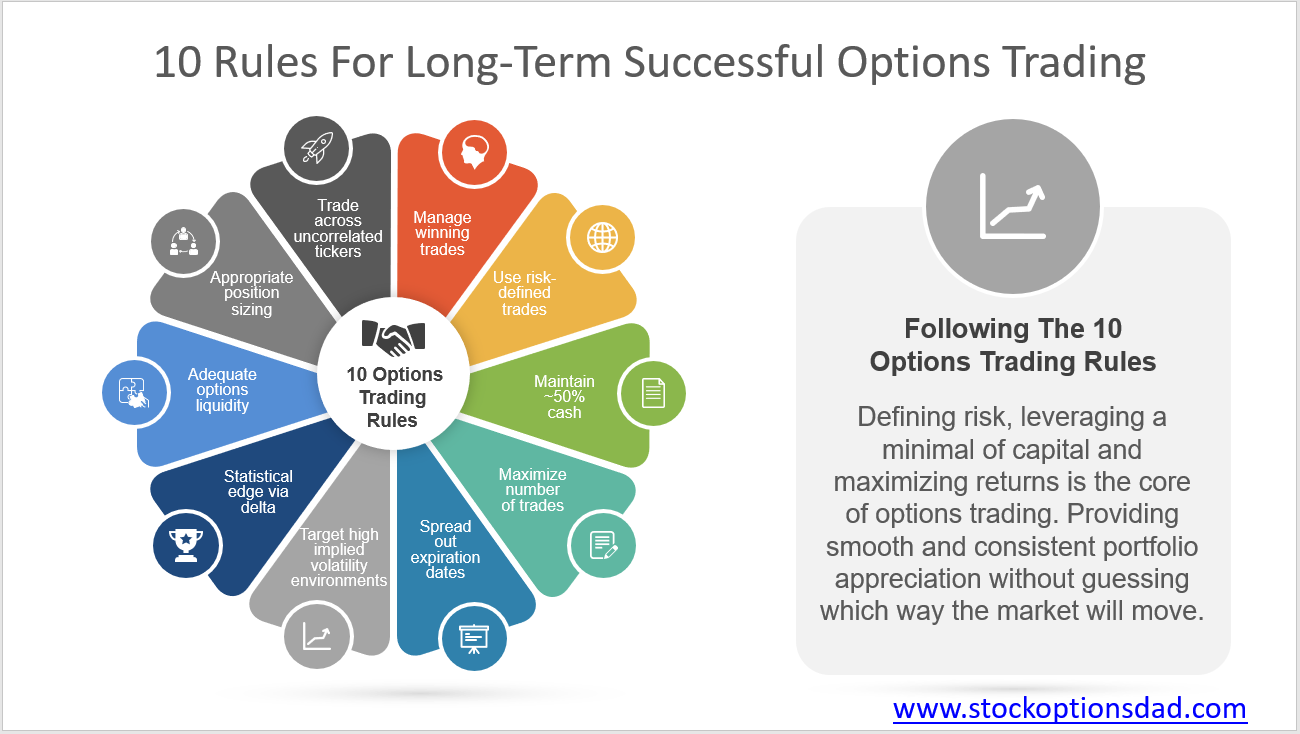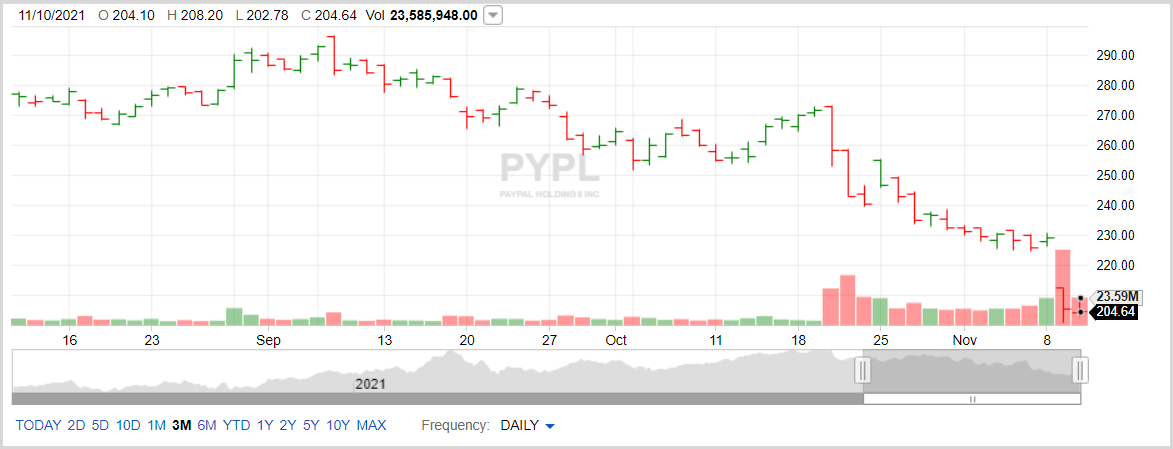By Ino.com
Controlling portfolio beta, which measures overall systemic risk of a portfolio compared to the market, on the whole, is essential as these markets continue to display bouts of extreme volatility. Containing volatility while generating superior returns relative to the market is the goal with an options-based portfolio. Mitigating risk within a portfolio can be achieved via a blended options-based approach where cash is held in conjunction with stock positions and an options component. Options alone cannot be the sole driver of portfolio appreciation; however, options can play a critical component in the overall portfolio construction to control risk and volatility.
Generating consistent monthly income while defining risk, leveraging a minimal amount of capital, and maximizing returns is the core of the options-based portfolio strategy. Options can enable smooth and consistent portfolio appreciation without guessing which way the market will move. Options allow one to generate consistent monthly income in a high probability manner in various market scenarios. Over the past 24 months (April 2020 – March 2022), 419 trades were placed and closed. An options win rate of 97% was achieved with an average ROI per trade of 4.4% and an overall option premium capture of 50% while outperforming the Dow Jones throughout these two years. The performance of an options-based portfolio demonstrates the durability and resiliency of options trading to drive portfolio results with substantially less risk. The options-based approach attempts to circumvent market drawdowns and generated a return of 62.2% relative to the Dow Jones’ 58.2% (Figures 1, 2, and 3).

Figure 1 – Overall option metrics from May 2020 to March 2022 available via a Trade notification service

Figure 2 – Overall options-based performance compared to the Dow Jones from April 2020 to March 2022

Figure 3 – Overall option metrics from May 2020 to March 2022
Results
Compared to the broader Dow Jones index, the blended options, long equity, and cash portfolio have outperformed this index overall and outperformed during negative return months. In even the most bullish scenario, post-pandemic lows where the markets erased all the declines and blew past previous highs via V-shaped recovery, this approach has outperformed the Dow Jones returns through March 2022 with substantially less risk (Figure 2).
Overall, from May 2020 through March 2022, 419 trades were placed and closed. As a result, an options win rate of 97% was achieved with an average ROI per trade of 4.4% and an overall option premium capture of 50% while outperforming the broader market (Figures 4 and 5).

Figure 4 – ROI per trade over the past 419 trades

Figure 5 – Percent premium capture per trade over the last 419 trades
Consistent Income Despite Market Declines
September 2020, October 2020, January 2021, September 2021, and February 2022 declines provide a great opportunity to demonstrate the durability and resiliency of an options-based portfolio. Positive returns for the options portion of the portfolio were achieved in all of these negative months.
The positive options returns were in sharp contrast to the negative returns for the overall market during these negative months. Generating consistent income without guessing which way the market will move with the probability of success in your favor is the key to options trading. However, the January 2022 market declines did result in option losses.
10 Rules for an Agile Options Strategy
Throughout the past 24 months of the post-pandemic rebound, a disciplined approach to an agile options-based portfolio has been essential to navigate pockets of volatility and circumvent market declines. A slew of protective measures should be deployed if options are used to drive portfolio results. When selling options and managing an options-based portfolio, the following guidelines are essential:
- 1. Trade across a wide array of uncorrelated tickers
- 2. Maximize sector diversity
- 3. Spread option contracts over various expiration dates
- 4. Sell options in high implied volatility environments
- 5. Manage winning trades
- 6. Use defined-risk trades
- 7. Maintains a ~50% cash level
- 8. Maximize the number of trades so the probabilities play out to the expected outcomes
- 9. Place probability of success in your favor (delta)
- 10. Appropriate position sizing/trade allocation
Conclusion
Controlling portfolio beta to reduce systemic risk in relation to the broader market while generating superior returns can be achieved via a blended options-based approach via cash held in conjunction with long equity and an options component.
An option-based strategy has been key in circumventing market declines and reinforce why appropriate risk management is essential. An options-based approach provides a margin of safety while mitigating the impacts of drastic market moves and containing portfolio volatility. In the face of volatility, consistent monthly income has been generated while outpacing the Dow Jones. Moreover, a cash, long equity, and options hybrid portfolio demonstrates its durability even when compared to the most bullish conditions post-pandemic bull market.
Following the 10 rules in options trading has generated positive returns in all market conditions for the options segment of the portfolio over the past 24 months, with the exception of January 2022. Moreover, the positive options returns were in sharp contrast to the negative returns for the overall market in down months. This demonstrates the durability and resiliency of an options-based portfolio to outperform during pockets of market turbulence. To this end, portfolio agility is required to mitigate uncertainty and volatility.
Noah Kiedrowski
INO.com Contributor
Disclosure: Stock Options Dad LLC is a Registered Investment Adviser (RIA) firm specializing in options-based services and education. There are no business relationships with any companies mentioned in this article. This article reflects the opinions of the RIA. Any recommendation contained in this article is subject to change at any time. No recommendation is intended to constitute an entire portfolio. The author encourages all investors to conduct their own research and due diligence prior to investing or taking any actions in options trading. Please feel free to comment and provide feedback; the author values all responses. The author is the founder and Managing Member of Stock Options Dad LLC – A Registered Investment Adviser (RIA) firm www.stockoptionsdad.com defining risk, leveraging a minimal amount of capital, and maximizing return on investment. For more engaging, short-duration options-based content, visit Stock Options Dad LLC’s YouTube channel. Please direct all inquires to [email protected]. The author holds shares of AAPL, ADBE, AMD, AMZN, ARKK, AXP, BA, BBY, C, CMG, CRM, DIA, DIS, FB, FDX, FXI, GOOGL, GS, HD, HON, INTC, IWM, JPM, MA, MS, MSFT, NKE, NVDA, PYPL, QQQ, SBUX, SPY, SQ, TMO, TWTR, UNH, V and WMT.
By Ino.com – See our Trader Blog, INO TV Free & Market Analysis Alerts















